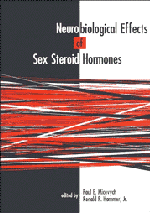Book contents
- Frontmatter
- Contents
- List of contributors
- Dedication
- Preface
- Acknowledgments
- Part I Sex steroid–responsive circuits regulating male and female reproductive behaviors
- Part II Sex steroid interactions with specific neurochemical circuits
- 5 Ovarian steroid interactions with hypothalamic oxytocin circuits involved in reproductive behavior
- 6 Sex steroid regulation of hypothalamic opioid function
- 7 Effects of sex steroids on the cholecystokinin circuit modulating reproductive behavior
- 8 Cholinergic regulation of female sexual behavior
- 9 Sex steroid regulation of tachykinin peptides in neuronal circuitry mediating reproductive functions
- 10 Dopaminergic influences on male rat sexual behavior
- 11 Studying neurotransmitter systems to understand the development and function of sex differences in the brain: the case of vasopressin
- Part III Cellular and molecular mechanisms regulated by sex steroids
- Index
10 - Dopaminergic influences on male rat sexual behavior
Published online by Cambridge University Press: 15 October 2009
- Frontmatter
- Contents
- List of contributors
- Dedication
- Preface
- Acknowledgments
- Part I Sex steroid–responsive circuits regulating male and female reproductive behaviors
- Part II Sex steroid interactions with specific neurochemical circuits
- 5 Ovarian steroid interactions with hypothalamic oxytocin circuits involved in reproductive behavior
- 6 Sex steroid regulation of hypothalamic opioid function
- 7 Effects of sex steroids on the cholecystokinin circuit modulating reproductive behavior
- 8 Cholinergic regulation of female sexual behavior
- 9 Sex steroid regulation of tachykinin peptides in neuronal circuitry mediating reproductive functions
- 10 Dopaminergic influences on male rat sexual behavior
- 11 Studying neurotransmitter systems to understand the development and function of sex differences in the brain: the case of vasopressin
- Part III Cellular and molecular mechanisms regulated by sex steroids
- Index
Summary
Sexual behavior of male rodents depends heavily on the actions of testosterone and its metabolites. One means by which testosterone may facilitate copulation is by altering the release and/or effectiveness of neurotransmitters. This chapter integrates information and speculation concerning the multiple roles of one such neurotransmitter, dopamine, in the regulation of male rat sexual behavior.
The three major dopamine systems that are important for male sexual behavior, including sexual motivation and genital reflexes, will be reviewed. Then, evidence suggesting that testosterone influences dopamine activity in the medial preoptic area (MPOA) and nucleus accumbens (NAc) will be discussed. Recent results suggesting that a novel messenger molecule, nitric oxide, might affect both dopamine release and sexual behavior will be presented, as will preliminary evidence suggesting that stimulation of the D1 dopamine receptor promotes copulation-induced expression of the immediate early gene c-fos in the MPOA. Finally, a model summarizing some of the events related to central dopamine release will be described.
The problem of neural coordination of behavior
The execution of a behavior as complex as copulation requires exquisite coordination of neural activity in numerous sites. Olfactory, visual, auditory, and somatosensory stimuli elicit a precisely timed and coordinated motor sequence that includes locomotor pursuit, mounting and pelvic thrusting, penile erection and insertion, and ultimately ejaculation and postejaculatory grooming and quiescence. Steroid hormones facilitate this process by biasing sensorimotor integration, so that a sexually relevant stimulus is more likely to elicit a sexual response. Most effects of steroid hormones on sexual behavior are relatively long term.
- Type
- Chapter
- Information
- Neurobiological Effects of Sex Steroid Hormones , pp. 234 - 253Publisher: Cambridge University PressPrint publication year: 1995
- 15
- Cited by



